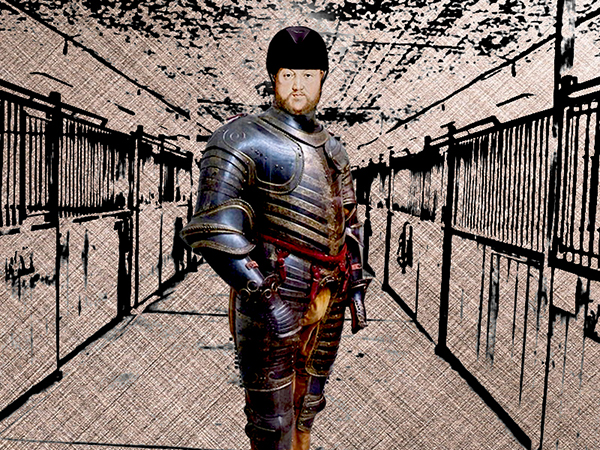Don’t be Like Henry VIII; Wear a Helmet!
According to some fascinating research coming out of Yale University, it’s believed that Henry VIII’s notoriously erratic behavior may have been the result of traumatic brain injuries sustained during his various equestrian pursuits.
Henry VIII is best known as the English monarch who had a fiery temper, womanizing nature, and tendency towards unpredictable behavior. Most notably, the request to annul his first marriage to Catherine of Aragorn, in order to marry his mistress Anne Boelyn, led to the English Reformation and the creation of the Church of England. He would later be married six times and behead two of his wives.
“It’s intriguing to think that modern European history may have changed forever because of a blow to the head,” says Arash Salardini, behavioral neurologist, co-director of the Yale Memory Clinic, and senior author of the study.
Madcap Majesty or Victim of Traumatic Brain Injury?
According to a paper published in the Journal of Clinical Neuroscience, traumatic brain injury, similar to that experienced by football players, would explain “the memory problems, explosive anger, inability to control impulses, headaches, insomnia — and maybe even impotence — that afflicted Henry during the decade before his death in 1547.”
To gain deeper insight into the timeline of events and medical history that may have led to his downfall, research assistants Muhammad Qaiser Ikram and Fazle Hakim Saijad analyzed Henry’s personal letters and other historical sources. Their findings showed that Henry suffered two major head injuries in his 30s. During a horseback jousting tournament in 1524, a lance penetrated the visor of his helmet and dazed him; he later suffered migraines as a result. One year later, he was knocked unconscious after falling head-first into a brook he was trying to vault across with a pole. (Admittedly not horse-related… but not very smart either).
However, it was a third jousting accident in January 1536 that may have delivered the final blow. During the match, a horse fell on top of Henry, which caused him to lose consciousness for two hours. “Historians agree his behavior changed after 1536,’’ Salardini says. While the young Henry was often portrayed as intelligent and even-tempered, in his later years he was described as erratic, forgetful, prone to fits of violence and rage, and often made impulsive decisions.
One example referred to in the study took place in 1546, when soldiers arrived to arrest his sixth wife Catherine Parr and take her to the Tower of London. Henry was furious that his soldiers would do such a thing and assured his wife that he would never send her to the Tower. He must have forgotten he gave the very order for her arrest the day before…
While other historians have cited the possibility of diabetes, Cushing Syndrome, and syphilis, those seem less likely in the face of this new evidence that points toward traumatic brain injury, which would best explain his behavior.
Other side effects of traumatic brain injury are growth hormone deficiency and hypogonadism, which can lead to metabolic syndrome, dramatic weight gain, and impotence… While Henry was often characterized as a womanizer during his youth, he did have “trouble in the bedroom” as far back as his marriage to Anne Boleyn in 1532. Therefore, it’s very likely that the disappointment he expressed (by divorce and beheading) of many of his wives’ inability to produce an heir to the throne may have been more his fault than theirs.
To think, it all could’ve began with a bump on the head…
Modern Day Links
The prevalence of head injuries has always been a hot topic in the NFL, even more so lately following the release of Will Smith’s new movie Concussion, where he plays Dr. Bennet Omalu, the man who discovered a link between football and chronic traumatic encephalopathy (CTE). Over the past decade, there have been numerous rule changes, the implementation of standardized concussion testing, and improvements in sideline care.
But football isn’t the only sport under scrutiny when it comes to head injuries. Helmet safety in equestrian sport is also a hot topic. Remember the AQHA rule change for 2015 that required all youth exhibitors to wear an ASTM/SEI-approved hard hat with harness when competing at any AQHA-approved show in an English class, including flat and over-fences classes? AQHA President at the time, Johne Dobbs, cited reasoning for the rule change. “Exhibitor safety is a paramount concern at AQHA-approved events. This amendment solely affects the youth division, and in so many other sporting events, youth wear safety helmets, so this really is about safety first.”
Moral of the story? Don’t be like Henry VIII; wear a helmet!











